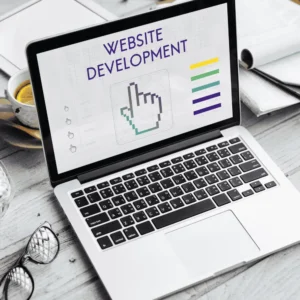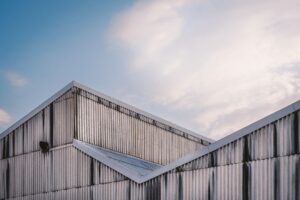In the ever-evolving digital landscape, staying ahead with the latest web design trends is crucial to creating websites that captivate users, boost engagement, and improve search engine rankings. As 2025 unfolds, web designers and businesses alike are embracing bold new aesthetics, interactive elements, and user-centric features that redefine how websites look and function.
This detailed blog post explores the most impactful web design trends for 2025, incorporating SEO best practices to help you craft content that ranks well and resonates with your audience. We’ll break down each trend with clear, keyword-rich headings and use list formatting to enhance readability and navigation.
Why Keeping Up with Web Design Trends Matters
Web design trends are more than just visual fads—they influence user experience, brand perception, and SEO performance. A modern, well-designed website:
- Builds trust and credibility
- Encourages longer visits and repeat traffic
- Supports mobile and accessibility standards
- Improves loading speed and technical SEO
- Enhances conversion rates with intuitive CTAs
By integrating current trends thoughtfully, you ensure your site stays relevant and competitive in 2025’s digital ecosystem.
Embracing Soothing Color Trends for Digital Comfort
One of the biggest shifts in 2025 web design is moving away from overly saturated, attention-grabbing colors toward soothing, warm, and nurturing color palettes. These palettes reduce visual fatigue and create welcoming digital spaces that invite users to stay longer.
- Multi-tonal color schemes blend sophistication with warmth.
- Pantone’s color of 2025, Mocha Mousse, exemplifies this trend with its rich, earthy tone.
- Designers use color psychology to guide users naturally through content and calls to action.
This approach balances aesthetics with user comfort, making your website both beautiful and easy on the eyes
Bold and Expressive Typography
Typography is evolving from purely functional to a central storytelling element in web design:
- Variable fonts offer flexibility and faster load times.
- Serif fonts are making a comeback, adding warmth and personality to headlines and CTAs.
- Maximalist typography features oversized, layered text that creates visual impact.
- High-contrast pairings between serif and sans-serif fonts enhance readability and style
Anti-Design and the Human Touch: Embracing Imperfection
The anti-design trend challenges traditional design rules with:
- Asymmetrical layouts and extreme unbalance
- Overlapping artwork and clashing colors
- Experimental typography and clutter core aesthetics
This imperfect, authentic style fosters a human connection by making websites feel more relatable and less sterile. It’s particularly popular on social media and creative platforms, providing a fresh alternative to polished, template-driven sites
Big Blocks and Vivid Contrast for Visual Impact
Using bold block-based layouts paired with vibrant color contrasts is a powerful way to organize content and guide users:
- Each block acts as a micro-environment, balancing visual interest with functionality.
- Contrasting colors create natural navigation points and highlight key features.
- This style suits creative brands, SaaS companies, and design-conscious audiences.
Canva’s website is a prime example of this trend, combining playful aesthetics with clear user pathways.
Brutalist Design: Raw, Honest, and Direct
The brutalist web design revival strips away decorative elements in favor of:
- Bold typography and simple layouts
- Monochrome color schemes and grid-based structures
- Unpolished, raw aesthetics inspired by punk rock and early web design
Far from aggressive, modern brutalism emphasizes authenticity and direct communication. It appeals to brands wanting to stand out in a sea of polished, homogeneous websites
Interactive and Immersive Experiences
Interactivity enhances engagement and creates memorable user journeys:
- Parallax scrolling reveals content dynamically as users scroll, telling a story.
- Micro-interactions and micro-animations add subtle feedback and delight.
- Gamified design elements encourage exploration and participation.
- Chatbots and voice-activated interfaces improve customer support and accessibility.
These features boost time on site and conversion rates while supporting SEO by reducing bounce rates.
Dark Mode and Text-Only Hero Images
Dark mode continues to gain popularity for its sleek look and eye comfort, especially on OLED screens. It also conserves device battery life, which appeals to mobile users.
Text-only hero images strip away distractions, focusing visitor attention on powerful messaging and CTAs. This minimalist approach can be particularly effective for landing pages and lead generation.
Sustainable Web Design
With growing environmental awareness, sustainable web design aims to reduce energy consumption by:
- Optimizing images and code for faster load times
- Minimizing resource-heavy animations and videos
- Choosing eco-friendly hosting providers
Sustainable design not only benefits the planet but also improves site speed and SEO, creating a win-win for businesses and users.
Advanced Use of Grid Layouts and Asymmetry
CSS Grid Layout continues to empower designers to create complex, responsive, and organized designs:
- Asymmetric grids add visual interest while maintaining usability.
- Grids enable consistent layouts across devices and browsers.
- Visible grids and unconventional frames are emerging as stylistic choices.
This balance of structure and creativity enhances user experience and accessibility.
SEO Best Practices for Leveraging Web Design Trends
To maximize the impact of these design trends on your website’s SEO:
- Use keyword-rich headings (H1, H2, H3) that incorporate trend-related terms like “web design trends 2025,” “interactive web design,” and “sustainable web design.”
- Optimize images with descriptive alt text and compress them to improve load speed.
- Ensure mobile responsiveness and fast loading times, critical ranking factors.
- Implement structured data to help search engines understand your content.
- Use clear CTAs and intuitive navigation to reduce bounce rates and increase conversions.
- Regularly update content to keep your site fresh and relevant.
Conclusion: Stay Ahead with 2025 Web Design Trends
The web design trends of 2025 blend aesthetics with functionality, authenticity with innovation, and sustainability with user engagement. By incorporating soothing color palettes, bold typography, anti-design elements, interactive features, and sustainable practices, you can create a website that not only looks modern but also performs exceptionally well in search engines.
Embrace these trends thoughtfully and pair them with SEO best practices to build a website that captivates your audience, strengthens your brand, and drives meaningful results in 2025 and beyond.
Start integrating these cutting-edge web design trends today to future-proof your website and elevate your digital presence!


